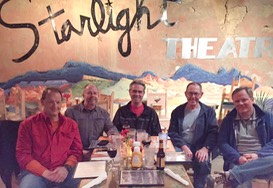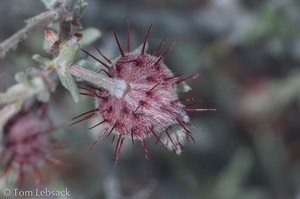I described my trip to Big Bend last December in such glowing terms that it was easy to convince some fellow-photographer friends to make the trip this year. There were five in our group: Bruce, Terry and Mark from Austin, Tom from Aurora, CO, and me.

It was a four-day trip that yielded photos that were different in some repects than spring photos. The first thing is that the landscapes are generally brown…it is after all late fall. The second is the lighting. The more southerly azimuth of the sun precluded some shots but enhanced others. And the skies were very clear—not much pollution in the air and very few clouds.
One other aspect of the trip was different than most in the past: the Rio Grande was very high, and had been even higher. As a result, we were unable to cross into Santa Elena Canyon, and were not very successful shooting in Boquillos Canyon.
The Starlight—almost the best place to eat in Terlingua

This trip focused more on scenery pictures, although I could not resist some wildflower shots as well. One of the benefits of visiting at different times in the year is that you find the same species in different stages, like this example. The photo on the left was taken in the spring, showing the fruit (in this case a burr) of the White Rataney plant. The second, taken in December, shows the blossom of the same species.

Another benefit is that you can return to the same spot and try to improve a shot. A couple of years ago, photography-friend Rick and I hiked up to the top of Lost Mine Trail before sunrise and were disappointed in the vista (we’ve becoming very picky). It was smokey. Wildfires north of us in the Fort Davis area had made a mess of the skies. I took shots anyway, and this was the best of the lot:
This year with less smoke in the air, the results were "clearly” different:
Click here for more scenery shots and here for more wildflowers from the trip.

